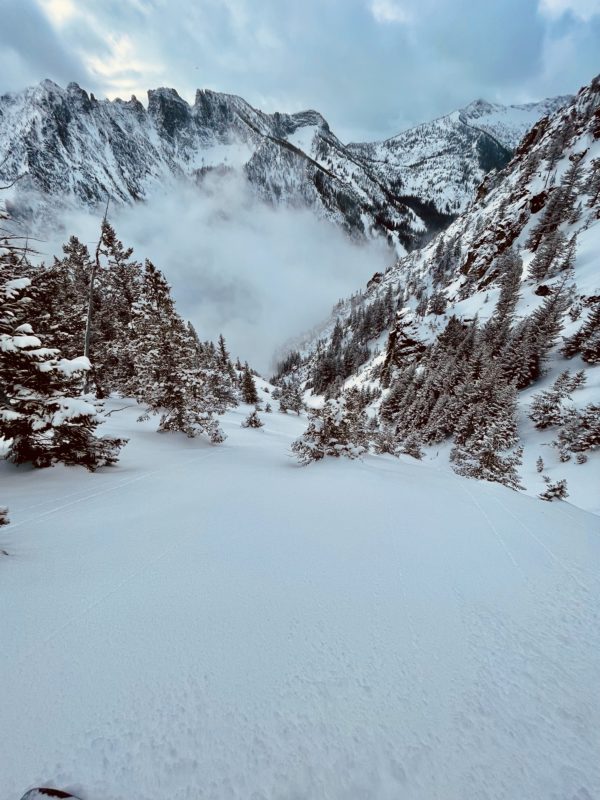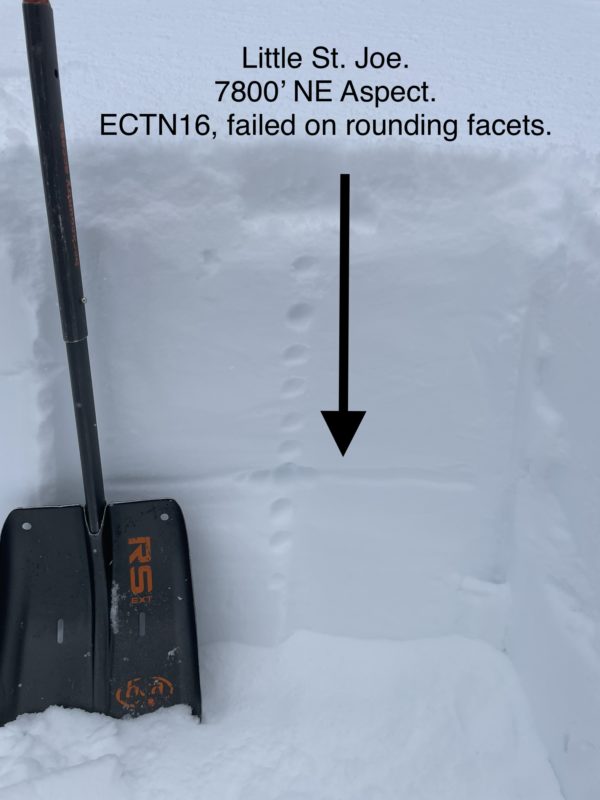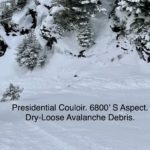Basic Information
Observation Details
Observation Date:
January 19, 2022 - January 19, 2022Submitted:
January 19, 2022Observer:
WCMAC - Todd GlewZone or Region:
Central BitterrootsLocation:
Little St. JoeSigns of Unstable Snow
Recent Avalanches?
YesCracking?
None ExperiencedCollapsing?
None ExperiencedSnow Stability
Stability Rating:
GoodConfidence in Rating:
HighStability Trend:
ImprovingBottom Line
We were most concerned with how the new snow was bonding to the old snow on southerly facing aspects. We found that the new snow had not yet bonded to the old snow. We easily triggered dry-loose avalanches on slope angles above 30 degrees. We carefully managed our avalanche concern on the steeper sections of our descent.
Media




Advanced Information
Weather Summary
Cloud Cover:
OvercastWind:
Light , NWIt was lightly snowing in the mountains at 7:30 am when we started our day. We experienced high clouds and light winds out of the NE.
Avalanche Observations
| # | Date | Location | Size | Type | Bed Sfc | Depth | Trigger | Comments | Photo |
|---|---|---|---|---|---|---|---|---|---|
| Numerous | Today |
Little St. Joe- S Facing Gully S 8500-6500 |
D1 | L | I-New/Old Interface | 3" (7cm) |
AS-Skier c-Intentional |
We triggered numerous loose-dry avalanches in terrain over 30 degrees on our descent. |

|
Dry-loose avalanches should not be as much of a concern tomorrow on this slope because the new snow will have had time to bond to the melt-freeze crust that it fell on.
Snowpack Observations
We dug multiple snow-pits on different aspects and elevations. Our pit results showed no propagation on rounding surface hoar and near-surface facets, buried about 1-2' deep (30-60cm).
Avalanche Problems
| Problem | Location | Distribution | Sensitivity | Size | Comments |
|---|---|---|---|---|---|
| None Specified |
|
Terrain Use
We carefully evaluated the snowpack today because neither of us had ski toured around Little St. Joe this season. We dug several snow-pits on different aspects and elevations and did not find any propagation. After finding stable results in our snow-pits, our main concern focused on how the new snow was bonding to the old snow surface. My first ski cut in steep terrain showed that dry-loose avalanches were easy to trigger. We managed the new snow instability by making ski cuts in steeper terrain to avoid getting caught in carried in an avalanche.
Close